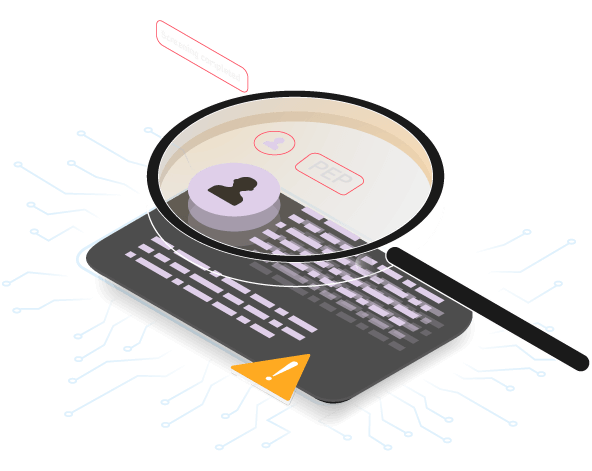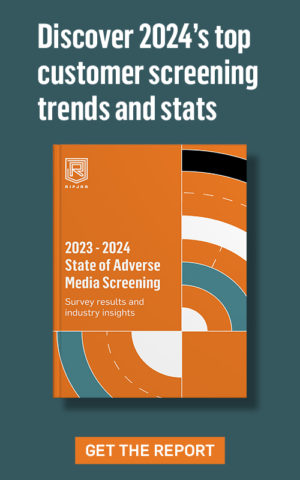The impact of financial crime is rarely overstated. It is the beating heart of criminal enterprises all over the world; it is the mechanism from which crime pays. Without the ability to launder the proceeds of crime, those that traffic in humans, or narcotics, or fund international terrorist groups – would struggle.
However, that they continue do so with such impunity is cause for serious concern. Despite decades of regulatory best-practice, collaboration, top down and bottom up initiatives – they succeed on a daily basis. Billions in illicit finance that fuels international criminality, bribery, violence, drugs and abuse of fundamental human rights; ultimately threatening our prosperity and collective security.
Against this well-trodden background – and with strong worldwide regulatory frameworks to marshal resources – a collection of people, organisations and technologies has evolved to make criminals life more difficult. By all accounts this is a $250bn+ industry and growing every year. And yet, it never seems to be enough. Case studies of the failings of this regime seem abundant, and becoming more frequent.
We need a revolution the response, much like the surge in innovation and mindset change that went into the global security community after 9/11. Like many of my colleagues here at Ripjar, I worked for over a decade within the UK intelligence community. We saw that response first hand. Working with financial institutions now, we see the same shift in mindset happening. Not just developing new ways of checking boxes faster, but developing much more effective controls to genuinely counter financial crime.
This focus on effectiveness means looking deeply at the methods and techniques that have traditionally been employed. It means questioning received wisdom for how things have ‘always’ been done. It means recognising that despite decades of investment and progress, financial intuitions are still dealing with age old issues of poor quality data, large numbers of false alerts, and a huge amount of manual and tedious analysis that cannot possibly hope to scale to the volume of both clients and data.
Inefficient and ineffective. No wonder criminals have adapted rapidly to ride roughshod through such controls and under the noses of even the most well-resourced compliance departments. Hidden in the noise, through myriad cutouts and cunning tradecraft – they are winning.
One of the key technologies we believe will bring about this revolution is artificial intelligence. Much of the hype around this topic has undoubtedly cost it some advocates, but getting it right is critical to scaling precious resources to covering more risk. Machine learning can both broaden the set of data that is utilised to understand whether a crime is taking place, but also at the same time it can narrow and reduce the noise and likelihood that what is brought back is relevant to an investigation, a review or an alert.
Properly implemented, AI can even spot patterns and behaviours that human beings are just not capable of, and to do so at a scale that would be impossible to resource manually.
The second aspect to this will be a step change in the way that people, teams, organisations, banks, law enforcement and regulators can share data and intelligence. There is not a discipline in history that has not benefited from greater information sharing and collaboration. No single team has all the pieces of the jigsaw. Indeed, the very idea of ‘intelligence failure’ – the inability to connect the dots in advance of a strategic shock – is hard-wired into the security and intelligence community. The ‘need to share’ rather than the ‘need to know’.
However, the difficulties of even sharing the most basic information on criminals abusing the international banking system is clear. Worse, existing methods for sharing data with law enforcement such as Suspicious Activity Reports (SARs) result in both oversharing (resulting in a deluge in poor quality data for the NCA), and dramatic under sharing – where the right data (or parts of the data) are not shared, resulting in large gaps in the overall intelligence picture.
For this reason, it is great to see that a core pillar of the UK government’s recently announced Economic Crime Plan (2019-2022) is to fundamentally look at how information is shared both in a voluntary and regulatory capacity, and even to legislate the necessary changes to ensure effective information sharing can take place between banks, between law enforcement – between the right people needed to protect the integrity of the overall banking system and preventing criminal finance.
This coordinated, industry-wide approach will require a cooperation and collaboration between technology vendors, financial institutions, fintechs, supra-national bodies, governments and law enforcement. I believe that by improving the technological fabric, transforming the way we analyse data, of joining the dots between disparate sources, and finding new ways to securely share intelligence between organisations, is critical to the success of countering financial crime effectively. I’m truly excited that Ripjar can step up to this challenge and look forward to working with the industry.











